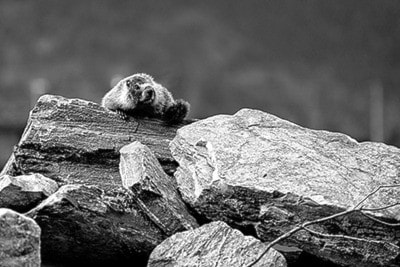Digital technology has been around long enough that I occasionally forget there are many people that have never used anything but small-sensored point and shoot digicams.
I recently talked with an amateur photographer who was planning to discard his well-used point-and-shoot camera hoping that a DSLR would help him take better pictures.
No, that’s not exactly right. He believed like so many others that a better camera would make him a better photographer.
Actually, his question was, “What would be the best camera for outdoors and wildlife photography?”
He is an outdoorsman and “needed the whole meal deal,” although I am not sure what he actually meant by that. Perhaps he wanted one camera that would be capable of doing everything.
What should be my advice to an aspiring wildlife photographer? I could give him my personal perspective, and I could suggest he search out wildlife and scenic photographer sites online to make his own decisions.
I will summarize what I got from a check of advice from avid wildlife photographers. Wildlife photography is harder on a camera than any other type of photography. Most of the time photographers will need to push the limits of their cameras. And, photographing wildlife will demand speed, resolution, and a well-built, quality camera, and, therefore, the best cameras for wildlife photos are usually the most expensive ones.
The photographer then should begin by looking at cameras that are durable, and capable of taking some bumping around, and be sturdy enough to take some abuse from the weather. And because the photographer would be shooting in all types of lighting conditions, especially low light, early in the morning, or at the end of the day, I would recommend looking at, and expecting to pay more for models capable of higher ISO.
Unlike a tiny digicam the photographer will need to concern him/herself with the lens, as well as with the camera.
Personally, I would save my money on the camera and spend it on a quality lens. A saying I have heard over and over ever since I have been in this medium is that “it’s all about the glass,” referring to the lens.
A photographer, like any craftsperson, needs the correct tools.
Then there is the discussion of full frame versus crop-sensor cameras when one is deciding on which is the best DSLR.
Hmm…I think that’s a can of worms best left for later. There are enough confusing choices to keep a photographer awake at night with topics like which camera manufacturer, which model, and which lens. And I suppose there are also the possibilities with the new host of lightweight, mirror-less cameras making their way into photographer’s bags.
I plan on spending some time helping this about-to-be wildlife/scenic photographer make his own choice about his camera equipment. I would rather not be one of those that advise a particular manufacturer.
That choice should be the photographer’s.
If we were able to ask Ansel Adams, one of the most famous scenic photographers, for his thoughts, he would say, “The single most important component of a camera is twelve inches behind it.”
I know that does not assist with the decision of what camera that photographer should get, but it does let him know that whatever he gets, he will absolutely need to spend time learning how to use it.
These are my thoughts for this week. Contact me at emcam@telus.net or stop by Enman’s Camera at 423 Tranquille Road in Kamloops. I sell an interesting selection of used photographic equipment. And if you want an experienced photographer please call me at 250-371-3069.
